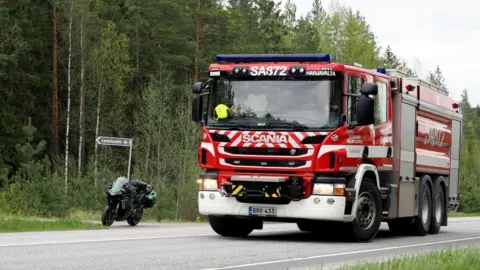Tragedy in Finland: Helicopter Collision Near Eura Claims Five Lives
Finland is known for its scenic landscapes, vibrant culture, and safety-conscious reputation. However, recent events have cast a shadow on the usually tranquil atmosphere of this Nordic nation. A tragic helicopter collision near Eura has brought international attention to Finland's aviation sector. This article examines the incident, its investigation, and the significance of aviation safety in Finland.

The Eura Helicopter Collision: What Happened?
On a quiet afternoon in southwest Finland, tragedy struck when two helicopters collided mid-air near Eura Airfield. According to Finnish police, five people were on board—two in one helicopter and three in the other. The aircraft took off together from Tallinn, Estonia, heading toward a hobby aviation event at the Piikajärvi Flight Center in Kokemäki. Sadly, all five passengers lost their lives in the crash.
Many news outlets have covered the incident in detail. The BBC reported that authorities found the wreckage in a forested area, intensifying concerns about what led to this catastrophe. Estonian and Finnish officials are now working closely together as investigators seek to determine the collision's cause.
Eyewitness Accounts and Initial Evidence
Eyewitness testimony has shed light on the moments before the crash. By multiple accounts, the helicopters were flying close to each other, likely preparing for their arrival at the event. An eyewitness described how "one of the helicopters made a quick movement and collided with the other." Both then dropped rapidly, with one descending like a stone and the other spiraling down. There was no visible smoke, and the accident happened so suddenly that rescue services had little warning.
Finnish outlets such as Yle confirm that both helicopters were foreign-registered, with at least one belonging to an Estonian company. Media sources indicate that the passengers were Estonian businessmen, further highlighting the international nature of the tragedy. The crash site was secured quickly by rescue teams, and investigations began within hours.
Ongoing Investigation and International Cooperation
Finland’s National Bureau of Investigation (NBI) is leading the inquiry, closely collaborating with local police and Estonian authorities. Confirming the identities of all victims remains a priority, and officials want to ensure absolute accuracy before releasing further information. The swift response is a testament to Finland’s commitment to transparency and public safety during crises.
For a comprehensive overview, The Guardian discusses how both helicopters were en route to an aviation event, adding that the investigation will review not only pilot behavior but also the helicopters’ technical conditions and flight paths.
Aviation Safety and the Road Ahead for Finland
Finland's aviation sector is generally recognized for its high standards and strict regulations. This recent crash, however, serves as a stark reminder that safety must always remain a top priority—especially in private and recreational flights where protocols can differ. The tragedy has already prompted calls within Finland’s aviation community for enhanced training, stricter safety checks, and potential changes to flight event regulations.
As Finland mourns the loss and works to understand what happened, the nation’s collaborative response with its neighbors stands out. Lessons learned from this incident could shape future safety measures in Finland, benefiting not only local pilots but the broader Nordic region as well.
Conclusion
The helicopter collision in Eura represents one of Finland’s most harrowing aviation incidents in recent memory. With investigations underway and safety discussions already beginning, Finland shows resilience and a commitment to preventing such tragedies in the future. Staying updated through reliable sources like Yle News and the BBC ensures the public remains informed as the story develops.
Let us hope that improved guidelines and international cooperation will make the skies over Finland even safer in the years ahead.